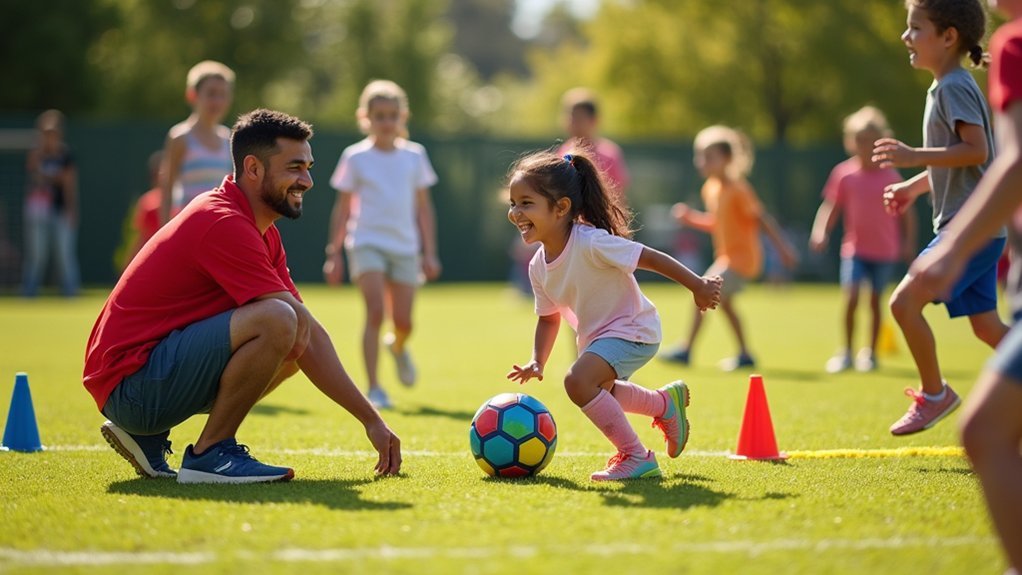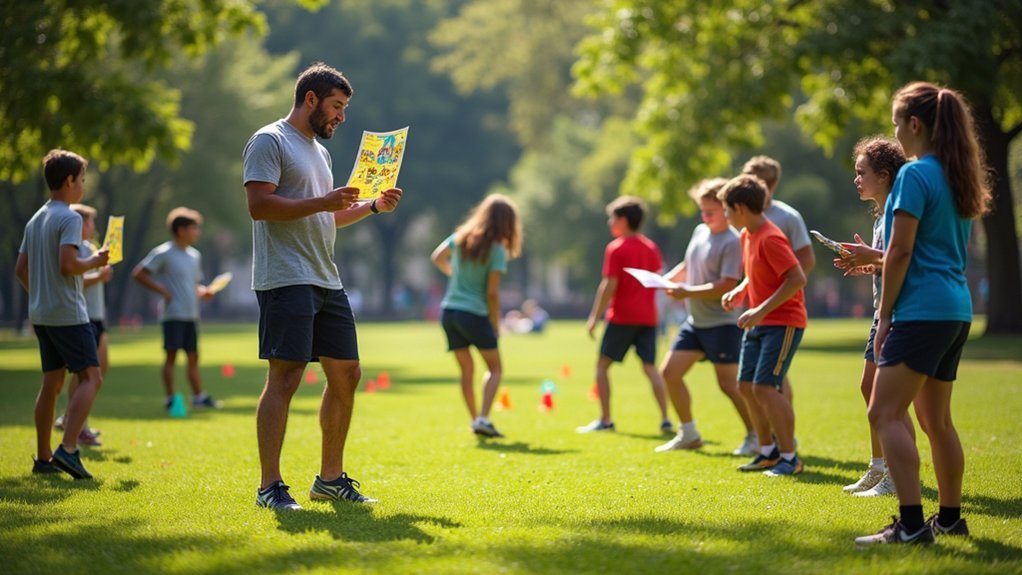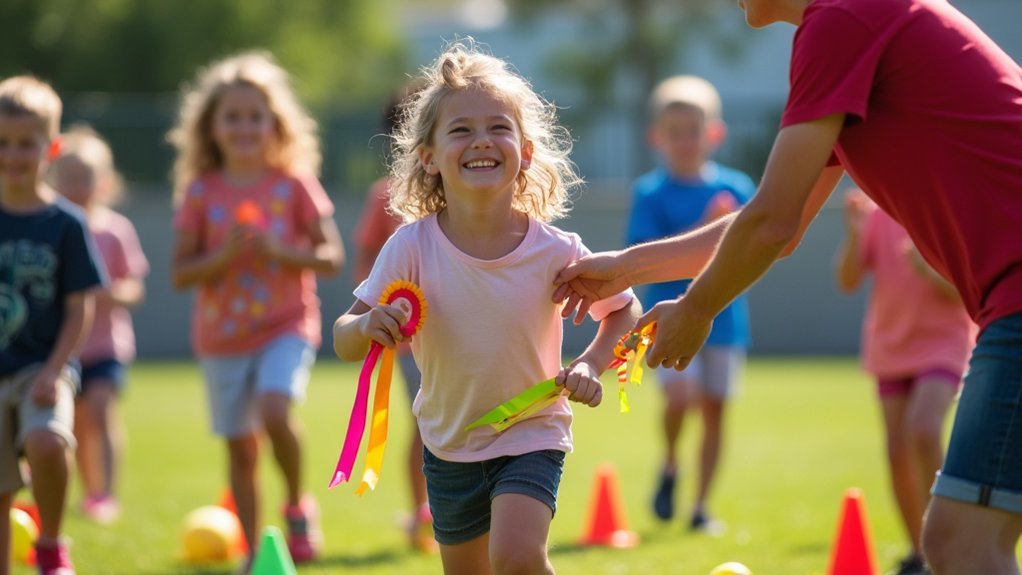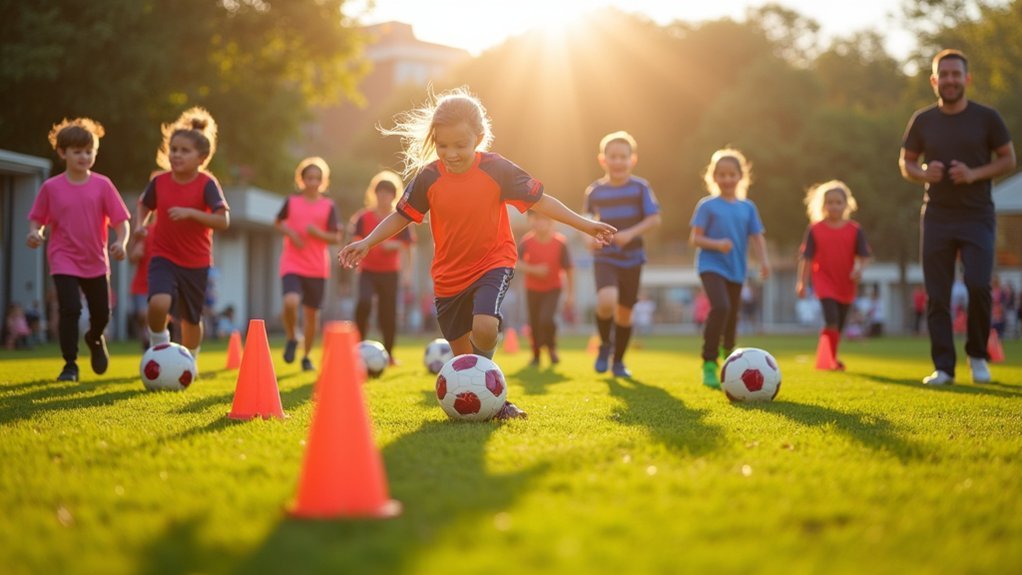When adapting sports for cognitive disabilities, simplify rules into manageable steps and use visual aids like colored cones for clarity. Establish consistent routines and predictable environments to build comfort. Demonstrate skills physically alongside verbal instructions. Structure activities around collaborative goals to develop social skills. Provide immediate, specific feedback and recognize achievements to boost motivation. These adaptations create inclusive experiences where everyone can participate and thrive in athletic pursuits.
Simplifying Rules and Instructions for Better Comprehension

When adapting sports for individuals with cognitive disabilities, clear communication forms the foundation of successful participation. You’ll need to simplify rules into smaller, manageable steps that participants can easily follow.
During training sessions, incorporate repetitive practice of instructions to enhance retention. Use visual aids like colored cones or illustrated charts to represent different positions or actions, making abstract concepts concrete. These visual supports considerably improve comprehension for many athletes.
Visual aids transform abstract sports concepts into concrete understanding, making inclusive participation possible through repetitive practice.
Create an inclusive environment where participants feel comfortable asking questions. Check for understanding regularly by having athletes demonstrate what they’ve learned.
Remember that patience is essential—some concepts may require multiple explanations using different approaches.
Creating Structured Routines and Predictable Environments
Because cognitive processing can be enhanced through consistency, structured routines form the backbone of successful adaptive sports programs. When you establish regular practice times and consistent activity sequences, you’ll help athletes with cognitive disabilities reduce anxiety and focus on skill development.
Implement visual schedules and cue cards to clearly communicate activity progression, supporting memory retention and independent changes. Keep your practice location and equipment consistent, as predictable environments build confidence and comfort for participants.
Use clear instructions and repetitive drills to reinforce learning. For example, starting each session with the same warm-up routine helps athletes understand what’s expected.
This predictability creates a foundation where athletes can concentrate on improving their abilities rather than worrying about what comes next.
Incorporating Visual Aids and Demonstrative Teaching

Visual aids and demonstrative teaching serve as powerful tools for enhancing sports instruction for athletes with cognitive disabilities. When you incorporate these elements into your coaching approach, you’ll help participants better understand rules, strategies, and techniques while accommodating diverse learning styles.
A well-crafted visual approach bridges understanding gaps, making sports accessible to athletes of all cognitive abilities.
- Use diagrams and illustrated instructions to boost retention and comprehension during sports activities.
- Implement color-coded equipment and markers to help athletes quickly identify their roles and objectives.
- Complement verbal instructions with physical demonstrations of skills and movements.
- Create step-by-step visual guides or checklists to help athletes follow complex tasks.
Fostering Teamwork and Social Skill Development
Teamwork and social interaction provide foundational benefits that extend far beyond the playing field for athletes with cognitive disabilities. When you structure adaptive sports around collaborative goals, you’ll see significant improvements in participants’ communication abilities and emotional well-being.
Implement team-building exercises that establish trust and mutual support among athletes. Assign specific roles that help individuals understand their responsibilities, boosting confidence in their contributions. You’ll notice enhanced decision-making skills as they navigate these structured interactions.
Incorporate peer mentoring by pairing experienced athletes with those who’ve cognitive disabilities. This approach naturally fosters empathy and problem-solving during recreational activities.
Don’t forget to celebrate collective achievements regularly. These moments of recognition strengthen social skills and reinforce the sense of belonging that makes adaptive sports so valuable.
Implementing Positive Reinforcement and Achievement Recognition

Strategic and consistent positive reinforcement serves as the cornerstone for successful adaptive sports programs involving athletes with cognitive disabilities.
You’ll find that acknowledging achievements, regardless of size, dramatically boosts participation and engagement while building essential self-esteem.
To effectively implement positive reinforcement in your program:
- Provide immediate, specific feedback during practice sessions to help athletes understand concepts more clearly
- Establish a structured recognition system using certificates or awards that celebrate both participation and improvement
- Use verbal praise and small rewards to enhance motivation during challenging activities
- Create an inclusive environment where the team collectively celebrates individual accomplishments
When you consistently recognize efforts and achievements, you’ll cultivate a supportive atmosphere where athletes with cognitive disabilities feel valued and motivated to continue their sports journey.
Frequently Asked Questions
What Are Some Suggested Techniques for Modifying Activities to Better Accommodate Athletes With Disabilities?
You can modify activities by using visual demonstrations, breaking tasks into smaller steps, implementing buddy systems, adapting scoring to emphasize participation, and maintaining consistent routines. These adaptations will better accommodate your athletes with disabilities.
How Can Local Sports Providers Encourage People With Disabilities to Participate in More Disability Sports?
You’ll attract more participants with disabilities by partnering with schools, offering inclusive team activities, providing trained coaches, hosting community events that celebrate success stories, and adapting programs based on athlete feedback.
What Are Some Ways to Make Sports More Inclusive and Accessible to People With Disabilities?
You’ll create more inclusive sports by providing accessible facilities, offering adaptive equipment, training staff on disability awareness, using clear communication, and modifying rules to accommodate different abilities while maintaining the sport’s integrity.
How Can People With Disabilities Play Sports?
You can play sports through adaptive equipment, modified rules, and accessible facilities. You’ll find specialized programs like wheelchair basketball, seated volleyball, or Paralympic events that accommodate your specific needs and highlight your abilities.
In Summary
By adapting sports for participants with cognitive disabilities, you’re opening doors to inclusion and personal growth. Remember, success isn’t measured by perfect athletic performance but by engagement and enjoyment. As you implement these five strategies, you’ll create meaningful experiences that build confidence, physical skills, and social connections. Your efforts don’t just change games—they change lives by making sports truly accessible for everyone.





Leave a Reply